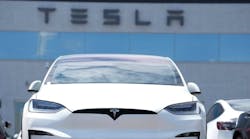Layoffs. Canceled plans. Price cuts. Since January, there’s no denying Tesla Inc has been on a rollercoaster, and its Q1 earnings report on Tuesday reflected it. In Q1, Tesla produced 433,371 vehicles and delivered 386,810 of them, coming in below already lowered estimates on the delivery side. CFO Vaibhav Taneja attributed the decline to “seasonality, uncertain macroeconomic environment and other reasons.”
In comparison, in Q4 of last year, the company produced 494,989 cars and delivered 484,507. Year-over-year, the numbers represent a 2% and 9% decline, respectively, and are a potential window into the recent troubles the automaker has faced.
Layoffs: On April 15, news broke that Tesla would reduce its global headcount by 10%, roughly 14,000 employees, due to a “duplication of roles and job functions in certain areas.” While this isn’t the first time Tesla has cut staff (7% in 2019 and 10% of salaried staff in 2022), it follows an increased hiring rate the past few years.
This round of cuts allegedly gutted some teams by 20% and included laying off the entire recently-created U.S. marketing team, according to Bloomberg, and nearly 2,700 employees will be cut from Tesla’s Austin factory. Drew Baglino, SVP of powertrain and electrical engineering and Rohan Patel, also stepped down from their roles at Tesla. While Patel wasn’t overly specific, simply citing “big overall changes” at the company, for Baglino, an 18-year Tesla veteran, it was just time, telling one outlet he felt “good” about the impact he’d achieved.
Canceled (?) plans: Earlier in April, Reuters dropped a report alleging that Tesla had scrapped plans for a low-cost EV, dubbed by some the Model 2. The vehicle, which was expected to start around $25,000, would have been a competitor to inexpensive Chinese EVs, which start as low as $10,000. CEO Elon Musk later said on X, formerly Twitter, that “Reuters is lying (again),” and revealed that Tesla would unveil its robotaxi this year on August 8.
He and other Tesla executives did elaborate on the company’s next steps during the earnings report, which focus on getting new models off the production lines, saying they had “updated” the future line-up to accelerate the launch of new models ahead of the previously-announced second half of 2025.
“These new vehicles, including more affordable models, will utilize aspects of the next generation platform as well as aspects of our current platforms, and will be able to be produced on the same manufacturing lines as our current vehicle line-up,” Musk said, echoing Tesla’s shareholder letter.
He also added that the new timeline would be “more like early 2025, if not late [2024],” but did not elaborate further when asked about a timeline, only reiterating that more details would come on August 8 with the robotaxi.
The update, which could mean less capex dollars being spent and efficiently capitalize on its current production capacity, is projected to enable more than 50% growth over 2023 production.
The possible capex reduction will look good on the company’s financials, which took a hit last quarter as well. Quarter over quarter, automotive revenue declined about 20% to just over $17 billion and a 13% drop from a year ago. Total revenue, which includes Tesla’s energy storage business and other services, was down 9% year over year. Operating expenses on the other hand, were up 37% from the same period to $2.5 billion.
Taneja said the higher costs were largely due to ramping production of the Model 3 at Tesla’s Fremont plant and disruptions at its Berlin one, which suffered a suspected arson attack in March that left it without power and stopped production for a week.
Going forward, Musk’s plan seems to be leaning hard into autonomous services, making multiple references to Tesla “solving autonomy” and anyone who didn’t believe it shouldn’t be an investor in the company.
“But really, the way to think of Tesla is almost entirely in terms of solving autonomy and being able to turn on that autonomy for a gigantic fleet,” he said, later adding that valuing Tesa like an auto company was “fundamentally […] the wrong framework.”
He also likened non-autonomous vehicles to “riding a horse and using a flip phone,” and said that if conclusive data came out saying autonomous cars were safer, human driven cars were like “killing people.”
“And in my view, this will be much like elevators. Elevators used to be operated by a guy with relay switch,” he said. “But sometimes, the guy would get tired or drunk or just make a mistake and saw somebody in half between floors. So, we just get an elevator and press button, we don't think about it.”
Tesla’s share price (Ticker: TSLA) has been on a downward trend over the past six months, experiencing multiple steep drops since January and hitting its lowest point in over a year in April at $138.80 per share. It reported earning after the bell, closing at $144.68 per share, putting its market capitalization at just over $460 billion.



